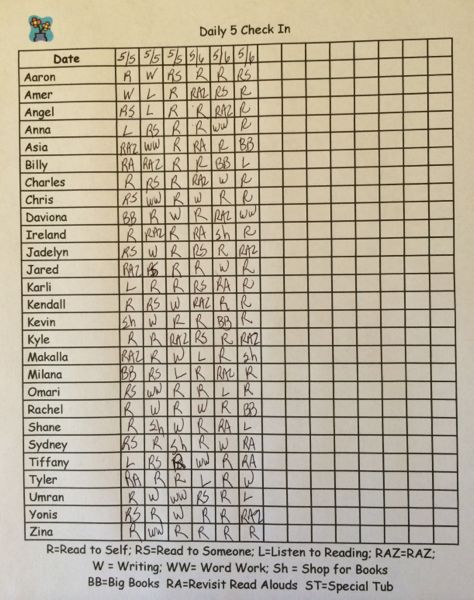
It is always good to remind ourselves of the importance of Choice in Daily 5 and why we so dearly hold onto it for our children.
Children love knowing what will happen during each day. Many teachers put daily schedules on their board and review it with their class each morning. Once it is on the board, children often own the schedule and keep teachers on task. Very often you will hear "Teacher, it's 10:30. We should be reading." There is comfort in knowing what to expect. As with any schedule, once children learn the structure and schedule of the Daily 5, they love it. Yet this schedule is different from the typical daily schedule in a few ways, both for the teacher and for the students.
One pronounced difference in the schedule for students is that they have choice regarding the order of participation in the Daily 5. Students will choose from 5 different tasks during the literacy block. When you enter a class that uses the Daily 5 as its literacy system, you see children Reading to Self, Reading to Someone, Listening to Reading, Working on Writing, and doing Word Work. These are all happening simultaneously. You will notice that each child has a strong sense of purpose, pride and accomplishment. The order in which each child does these things can (and probably will) vary each day, according to how that child is feeling at the moment.
When teachers initially hear that children will have the power to choose what they will be doing during Daily 5, they may become nervous, since they have been used to owning the clock and the schedule along with owning the children's learning. This message to teachers, that they need to own their students' learning, can be found around every corner in education. Teachers are given textbooks and told to "teach this to your children." Teachers are given curriculum schedules which dictate, "You will teach this on this day."
However, When teachers trust students to make responsible choices, students gain control over their own learning. Children who are invited to decide the order of tasks, to choose their own partner, or to choose a strategy that works for them, perceive themselves as more competent and become more involved in their work. Students who are given the opportunity to select appropriate cognitive or metacognitive strategies for comprehension will feel greater ownership of their achievement, (Turner & Paris, 1995). However at times the biggest challenge with choice is how to manage it.
Below is the form we use to help us manage and keep track of the choices our students make each day. We run off a number of them and keep them on a clipboard in our whole group instruction area. Before each round of Daily 5, whether we do two, three,or four rounds, we have children 'check in' verbally with us and we record their choice on this chart with a coding system; R=Read to Self, RS=Read to Someone, W=Work on Writing, WW=word work, L=Listen to Reading.
Recording their choice on the sheet accomplishes a number of things. When students verbally check in and see us record their Daily 5 selection, it is like forming a contract for what they will do and helps them gets started right away. This check-in also allows us to keep track of each student's choices so we can nudge them to vary their Daily 5 choice if necessary.





